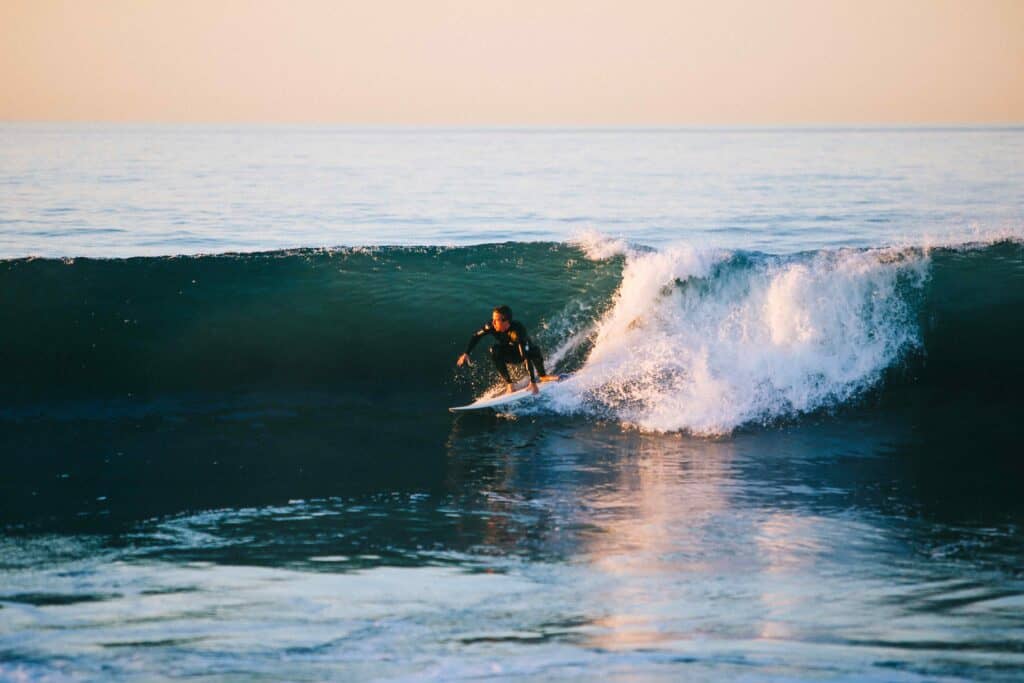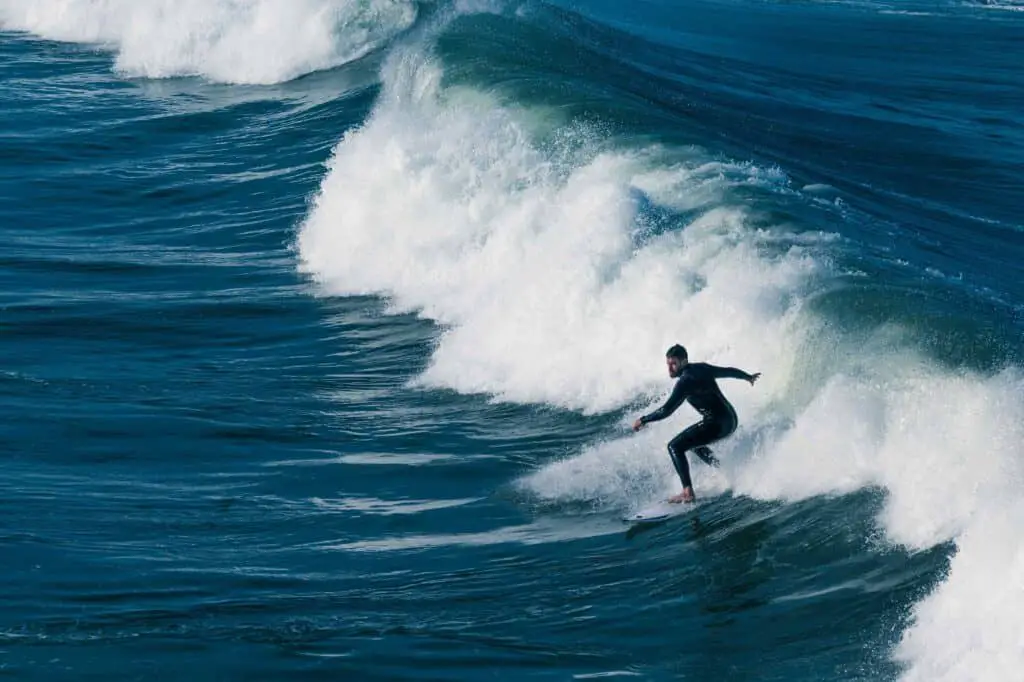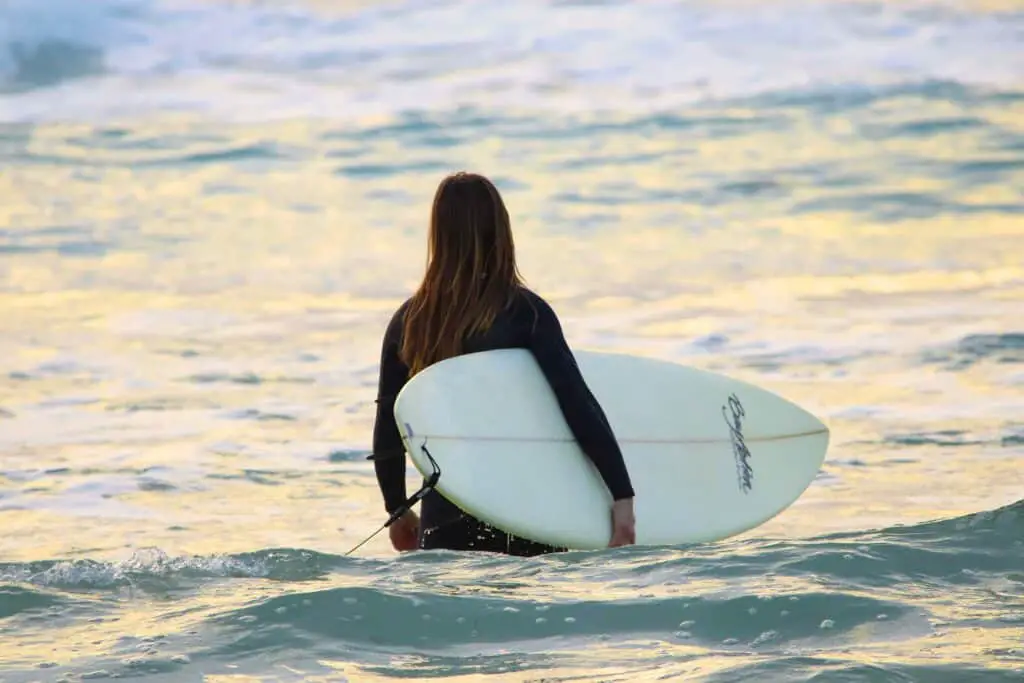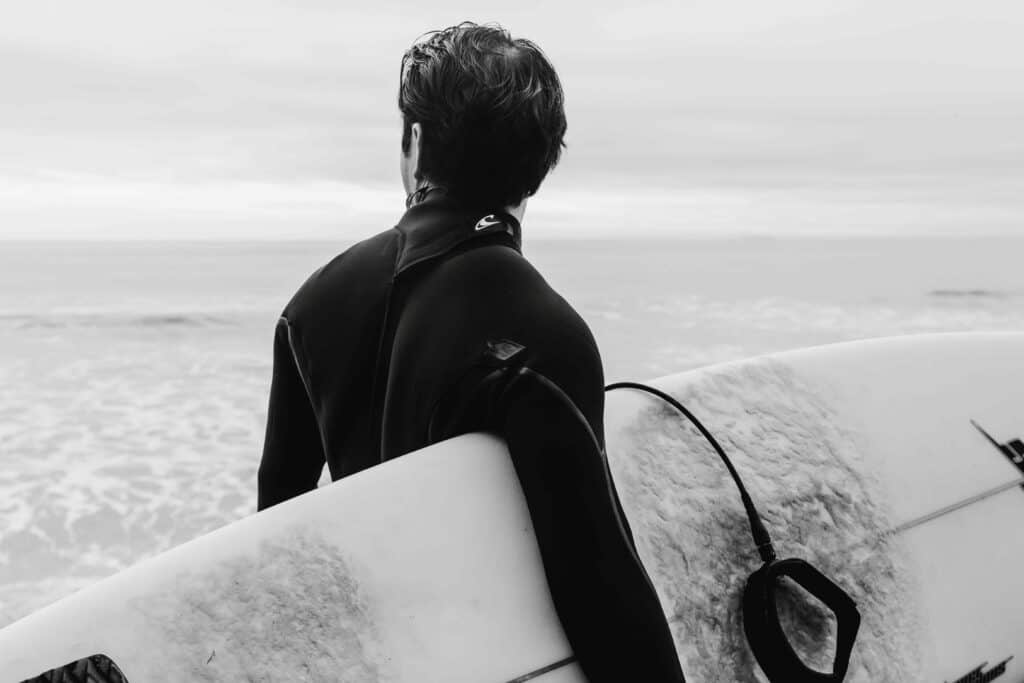It’s often debated and people have a range of opinions when it comes to whether you can learn to surf on a shortboard. Like everything with surfing, there’s no right or wrong answer. As we know, learning to surf is hard and it takes most people a long time to really master as well as a large dose of solid commitment to the task.
Here at Get Foamie, we’re pretty firmly on the longer is better side of the equation but we’re realistic enough to know that for a range or reasons, some people will prefer and even excel by learning to surf on a shortboard. It can and has been done many times the world over.
In this article we’ll take a look at some of the reasons for and against so that you can make your own mind up, as well as some helpful tips if you do decide to learn to surf with a shortboard.

Pros of learning on a shortboard
While many often discuss the reasons against trying to learn with a shortboard (including us), there are many positives of shortboards for learning surf skills and for progression later on.
Duck diving
Duck diving is an important skill to master if you’re ever going to start surfing a shorter board and so if you can get around this early, and ensure you learn the correct way to duck dive this will be an asset as you progress your surfing.
Refined Surf Skills
Shortboards require more finesse in all aspects of surfing but particularly in terms of paddling, popping up quickly, generating speed and maintaining your balance while on the board.
Control and turning
While longer surfboards do a lot of the work for you in terms of catching and being carried by a wave, on a shortboard you have to do a lot more in order to capture the energy of the wave and this involves a high degree of control and skills around bottom turn to initially build speed and momentum and then coming off the top of the wave. These skills can only be developed to a higher level on shorter surfboards.
Bigger surf
While you probably won’t start off learning in bigger surf (we’d strong advise against it!), being able to surf a shortboard will allow you to tackle bigger waves once you are confident to do so.
You can ride longboards in bigger waves but the traditional learner friendly boards aren’t really designed and cut out for anything bigger than a few feet.
Negatives of shortboards for learning
Less buoyancy and not forgiving
Shortboards have far less volume than longer boards and therefore are not as buoyant in the water. You will notice this not only when you are lying on the surfboard but also when you are standing – as the minute you lose sufficient momentum you will sink or come off the back of the wave.
Paddling is harder
With limited buoyancy It takes a lot more energy to paddle a shortboard, as you naturally sink more in the water. As a result you will likely tire out a lot quicker on a shortboard. There’s enough things going on when you are learning to surf and when you’re feeling constantly drained by working overtime in the paddle department, it can all get too hard..
Need to pop up very quickly on a shortboard
On a shortboard, almost as soon as the board is on the wave you need to pop up to your feet to set up the bottom turn and to generate speed down the line of the wave.
Balance is much harder
Once you’re standing and surfing on a shortboard, movements are quite sensitive in that if you put too much weight to one side you can quite easily lose it. Further, as turning and using the face of the wave is so important – maintaining your balance in these movements is difficult and definitely something which can take a long time to learn properly. To most people these specialised movements are not something which you can learn in a short period.
A high degree of fitness is needed
It’s fair to say that your level of fitness needs to be considerably higher on shortboard for some of those reasons outline above – paddling, pop up and balance.
More power needed to get into the wave
As we mentioned, shortboards put more onus on the rider to get into a wave and then to make the most out of the wave to generate speed. With less flotation, a shortboard needs more power in the wave to initially get onto it and this means you will have to sit closer to the impact zone, which is challenging for learners and can lead to some pretty heavy poundings.
Might make you want to quit
For all of the above cons of learning with a shortboard surfboard, it’s clear that there are many challenges and with little or no progress, it’s not uncommon for learner surfers to want to put their hands up and quit. Of course, this can be said for anyone learning to surf on any size board, but the point is that there are many aspects of learning to surf on a shortboard which pose difficulties for your average beginner surfer.

Benefits of longer boards for learning
Fundamentally, where we see the benefit of min mal or longboard surfboards for learners is that they can take away several (but not all) of those key challenges that we have just run through above in the cons of shortboards for learners. When you remove some of these key difficulties such as paddling, balance and the need to pop up really quickly – you’re left with less variables to try and get your head around when trying to pick up the initial skills of surfing.
We’ve summarised this up in some main points as follows:
Easier to get into waves
Higher volume boards have the advantage of being easily able to get into waves, even if they are small and barely breaking. With a few paddle strokes you can generally catch most waves as the board’s length and buoyancy does the heaving lifting.
So this basically means you can catch more waves, with less effort and avoid having to try and get onto them in the more critical breaking part of the wave which you need to on a shortboard.
Increased stability
With more flotation and stability, longer boards are far easier to pop up and stand up on. Not only that but there’s less need to pop up immediately as you need to on a shortboard. Once you’re up and standing, longer surfboards are more forgiving in the sense that you can slightly misstep and still keep your balance.
Paddling
One of the most noticeable benefits of a longer board for learners is that you will be noticeably floating on top of the water as opposed to sinking so there is far less resistance when paddling. Each paddling stroke will provide greater output in terms of moving the board forward so as a learner you won’t be fighting as hard just to move around and therefore won’t tire as quickly.
Read next – Is It Hard to Become a Surfer?
Fast progression and motivation factor
Once you’ve picked up the real basics of surfing on a longer board you’ll see incremental improvements quite quickly. There’s nothing more motivating than getting better and it’s this factor that is one of the key benefits. You’ll want to keep improving and learning instead of tossing up whether to throw the towel in and quit in frustration.
Once you’ve got it down pat you can always progress to a shorter board, or of course a more refined longboard or mid length surfboard.

What kind of board is best for me to learn to surf on
We’ve outlined some of the main reasons for and against shortboards for learner surfers.
The reality is some people may have a strong desire to surf only a shorter board despite the reasons against them. If you’ve got experience snowboarding, or wakeboarding – you are probably used to the feel of a small board under feet and naturally may take to surfing shortboards more easily than someone without any boardsports experience.
Everyone is different, and everyone has their own reasons. If you’re set on learning how to surf on a shortboard read on in the next sections where we cover some tips on how to make the most of it.
If you’re unsure and what to find out more about how to choose the right surfboard for you – check out our posts on what size surfboard should I get or our best surfboards for beginners guide.
Key Skills Needed For Surfing Shortboards
As we’ve highlighted so far, you can definitely learn to surf on a shortboard, but fundamentally you will need to refine all of the key surfing skills quickly to really progress learning to surf on a shortboard with some of the key aspects as follows.
- Floating and paddling: for a beginner this step takes time to learn (much less on a larger board). The challenge is to find the right body placement for paddling so that your board is as flat as possible on the water. This is dual purpose, to paddle and move forward effectively and to paddle into and get onto waves.
- Popping up: the smaller the surfboard the harder it is to learn to pop up as you’re working with a small, loose and unbalanced platform and you need to spring up in a controlled single movement and then maintain balance. You’ll need to practice the pop many times including on land. The pop up ultimately impacts how you catch and ride a wave.
- Riding the wave: On a shortboard having the right stance and foot placement is important. It’s a process of keeping your back foot at the rear of the board centrally over the fins, bending your knees with your weight on the back foot, and steering with your front shoulder.

8 Best Tips For How To Learn To Surf on a Shortboard
1. Choose an appropriate shortboard to learn on
Avoid the toothpick style of shortboard that you probably see a lot of people surfing (or trying to surf). A lot of these boards are pro surfer models that few people can surf well and certainly not learners. Seek out a longer shortboard, with decent width, thickness and volume designed for smaller waves. A shortboard along those lines will only help you in the early stages and ultimately in the long run as you will progress faster.
2. Quantity over quality
We say this often, but when you are starting out its all about catching as many waves as you can, with a quantity over quality approach. The more waves you catch every session means more repetition of those key moves and quicker improvements.
3. Work on your surf fitness and training
As we’ve highlighted riding a shortboard is physically more demanding and demands more strength and aerobic fitness. Unless you are already an image of peak fitness it will only help your surfing if you work on fitness training outside of the water. Other activities such as yoga can be extremely beneficial for surfing as well.
4. Surf in variety of conditions
Don’t just wait for the perfect surf conditions and waves. Get out there in all conditions (within your comfort level of course) including choppy and wind blown waves. You’ll learn something on all kinds of waves and although sometimes these types of conditions can make it difficult, all the experience helps.
5. Practice your popup
One of the most challenging aspects of learning to surf on a shortboard is definitely the pop up. As much as may seem cliche to practice popping up on the beach or elsewhere, it really helps. Popping up in one fluid motion requires practice and repetition of that move, in and out of the water.
6. Practice your paddling
Paddling is such a fundamental part of surfing, and particularly on a shortboard so you could do worse than to practice solely on your paddling for a session or two. It’s not easy initially to find that perfect position and balance in the prone paddling position. You want to be able to climb back onto your board and automatically find that right position where the board is flat beneath you (not sitting too forward so that the nose is pearling or too far back that the nose is well out of the water).
7. Focus on foot placement
You will need to learn how to properly position yourself on the board when in standing position and this is not such a natural stance for most people when they are starting out. You will need some help with his and once you know how, it’s a matter of trying to land in that position directly from the pop up, everytime.
8. Surf with people better than you
Rather than trying to learn to surf on your own, we often talk about the advantages of surfing with friends or others that are better than you. They may be a friend who is just slightly ahead of you, but anyone who you can leech little pointers from whether that’s them telling you things or simply picking up things that you see people doing while surfing – this can have a great impact on your learning and it can be another motivating factor.
Final Thoughts
It may seem that our position is firmly against learning on a shortboard, but we believe we’ve presented a fairly balanced analysis of cases for both. Ultimately if you want to learn to surf on a shortboard you definitely can and a lot of people do.
We believe a longer surfboard makes the initial learning stages far easier on most learners and allows them to focus on a few core skills to begin with, instead of the full gambit of surf skills required to learn on a shortboard. The benefit of this is quick progression on these fundamentals and an easier pathway to refining further skills and becoming a better surfer.
If you do wish to jump straight on a shortboard, we’ve given some logical tips to consider, which will hopefully help you to focus and overcome some of the challenges involved with a less user friendly surfboard.
Whatever you choose – good luck with your surfing and most importantly have fun!
